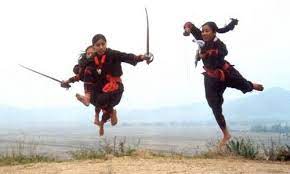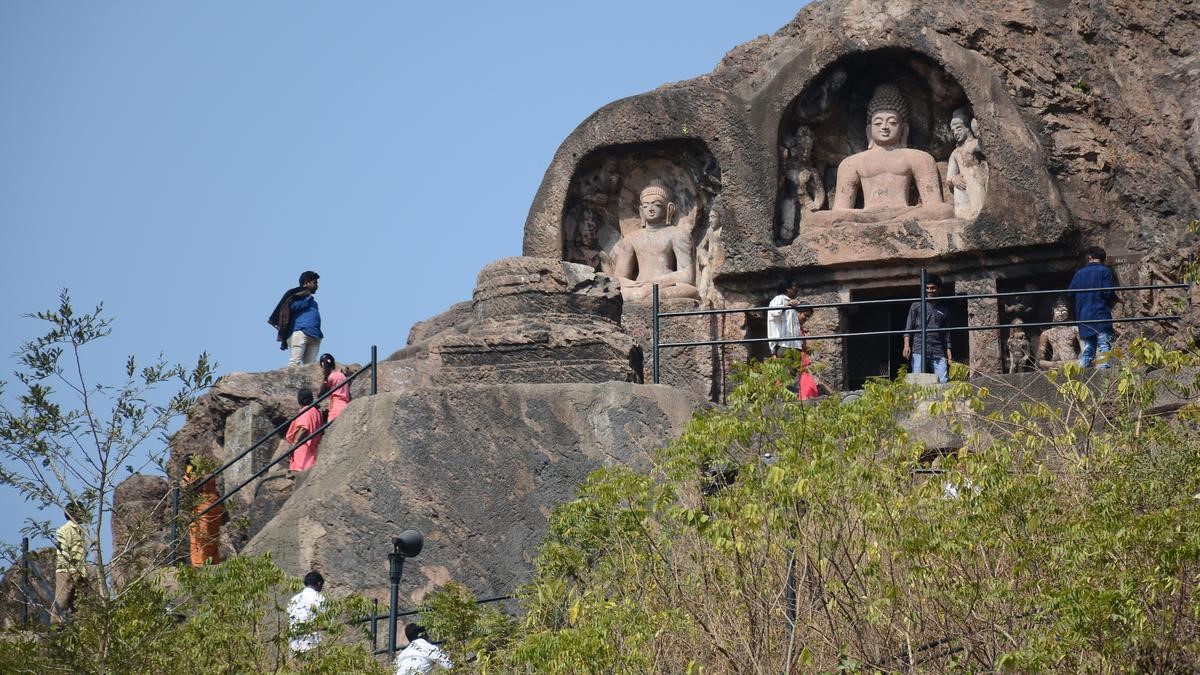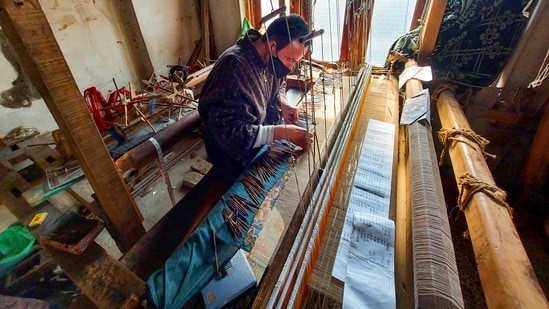Description

Disclaimer: Copyright infringement not intended.
Context: In Jammu and Kashmir locals have taken the steps to protect and promote the traditional martial arts sport ‘Thang-Ta”.
Thang Ta:
- Huyen langlon is an Indian martial art from Manipur.
- In the Meitei language, huyen means war while langlon or langlong can mean net, knowledge or art.
- Huyen langlon consists of two main components:
- Thang-ta (armed combat)
- sarit sarak (unarmed fighting).
- The primary weapons of huyen langlon are the thang (sword) and ta (spear). Other weapons include the shield and the axe.
Martial Arts in India:
- Martial arts mean “arts concerned with the waging of war”.
- Various Indian Martial arts have originated from various ancient war skills.
- It gives & takes features from Indian yoga, dance & performing arts.
- Many Indian dances have inspired & taken routines from the present martial arts.
- Dance artist who also knew martial arts & incorporated them in their routines were considered “special”.
- Martial Arts have their origin in the ancient India.
- But many of these martial arts were prohibited by British in the wake of various protests that started from 1820’s.
- But many of these continued & some of them were reviewed again from 1910 & got prominence after Independence.
Kalarippayattu (Kerala specially) & rest of south
- Weapon based type
- “Kalari” means arena. “Payattu” means combat/fighting.
- Involves strikes, kicks, grappling, preset forms, weaponry and healing methods, the footwork movement
- Kerala’s “Kathakali” incorporates greatly of this in their routines
- Considered older than Chinese martial arts
- Associated Legend: This art form was taught to early masters of this by Parashurama (an incarnation of Lord Vishnu) to protect the land he created.
Malla-Yuddha (South India)
- Combat-Wrestling type.
- Unarmed type.
- Four types:
- Hanumanti – for technical superiority
- Jambuvanti – focuses on locking and holding till opponent gives up
- Jarasandhi – breaking limbs and joints
- Bhimaseni – focuses on sheer strength
Silambam (Tamil Nadu)
- Weapon based type
- Variety of weapons used.
- Majorly used “Silambam staff” as a weapon. (staff – a traditional pole weapon. It has many variants from just a stick to having knife at one end)
- Foot movements plays a key role
- Movements of animals like snake, tiger, elephant and eagle used
- “Kuttu varisai” – a variant of silambam & uses no weapon
- Associated Legend: this martial art was developed by Lord Muruga (son of Lord Shiva, other name – Kartekeya) & sage Agasthya
- Travelled from Tamil Nadu to Malaysia
Gatka (Punjab)
- Weapon based
- Used by Sikhs mainly
- Gatka means – “One whose freedom belongs to race”
- Stick, Sword, kirpan or kataar used as weapon
Musti Yuddha (Varanasi)
- Unarmed type
- Punches, kicks, knees and elbow strikes used
Lathi (Punjab & Bengal)
- Weapon Based
- Cane Sticks used.
- Popular more in villages
- Mardani Khel (Kolhapur, Maharashtra)
- Weapon Based
- Created by Marathas
- Suitable for hilly regions
- Uses sword mainly & needs rapid movements
Pari-Khanda (Bihar, Jharkhand, Odisha)
- Weapon Based
- Created by Rajputs
- “Pari” means shield & “Khanda” means sword (according to Chhau rulers)
- Gave birth to Chhau dance
Inbuan Wrestling (Mizoram)
- Unarmed Type
- Has strict rules prohibiting kicking, stepping out of the circle and bending of the knees.
- Aim is to lift the opponent off his feet while strictly adhering to the rules
- Catching hold of the belt worn by the wrestlers around the waist; it has to remain tight all through the game.
Kuttu Varisai (South India)
- Unarmed Type
- “Kuttu Varisai” means empty hand combat used to improve footwork and athleticism through gymnastics, stretching, yoga and breathing exercises use of animal-based sets which includes tiger, snake, elephant, eagle and monkey.
Cheibi Gadga (Manipur)
- Weapon Based
- Uses sword & shield
- Victory depends more on skill than on muscle power
Sarit-Sarak (Manipur)
- Unarmed Type
- Used to fight with armed or unarmed opponent
- Perfect in its evasive and offensive action
Thoda (Himachal Pradesh)
- Weapon Based
- Originated from the times of Mahabharata
- Generally based on archery skills
- “Thoda” is the round piece of wood fixed to the head of the arrow
Mukna (Manipur)
- Unarmed
- Wrestling Type
- Two men with their hands holding clothe bands on each other waists wrestle with one another and attempts to throw the other down, and the victor should always be on top of the one falling down
Lakna-Phanaba (Manipur)
Karra Samu (Andhra Pradesh)
- Armed Type
- Basically stick fighting
- Kathi Samu (Andhra Pradesh)
- Armed Type
- Basically sword fighting
https://www.pib.gov.in/PressReleasePage.aspx?PRID=1831843
1.png)















